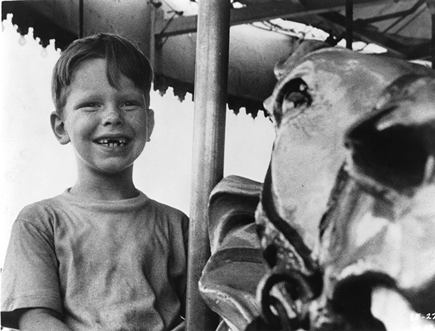
 Three New York photographers put together a low-budget movie in 1953, outside the Hollywood system, using the story of a 7-year-old kid at Coney Island to provide a cinematic slice of real New York life, and Little Fugitive ended up being an influential example of independent film.
Three New York photographers put together a low-budget movie in 1953, outside the Hollywood system, using the story of a 7-year-old kid at Coney Island to provide a cinematic slice of real New York life, and Little Fugitive ended up being an influential example of independent film.
The independent fiction film was indeed a rarity in the heyday of the studio system. In 1953, Hollywood was making widescreen spectaculars. But that same year, a group of New York photographers—Morris Engel, Ray Ashley, and Ruth Orkin—got together to make a movie at Coney Island on a shoestring budget. The result was a film called Little Fugitive, an unexpected success that was an influence on future independents, including the directors of the French New Wave.
Seven-year-old Joey lives in Brooklyn with his single mom and his twelve-year-old brother Lennie, who hates having to babysit him all the time. When an unexpected emergency forces Mom to leave on a weekend, Lennie’s planned trip to Coney Island with his friends is spoiled because he has to take care of Joey. Lennie and his friends then play a malicious trick. They tell Joey—who loves cowboys, horses, and guns—that he can try shooting a real gun, and then they make it seem as if he’s accidentally killed Lenny. Terrorized, and thinking that the police are after him, Joey runs away, taking the train to Coney Island, where he wanders around having various adventures while his panicked older brother tries to find him before Mom comes home.
Considering the low budget, labored premise, and amateur acting, I was prepared to be disappointed. Fortunately the film has one perfect actor: little Richie Andrusco, who plays Joey. This kid was a complete natural, with none of the coy or saccharine qualities that often afflict child actors. Once the action shifts to Coney Island, the picture becomes more and more wonderful, until I found myself laughing out loud in delight.
Most of the movie has an offhand, slice-of-life style, following Joey as he rides on the carousel, eats cotton candy, and takes a turn in the batting cage. When he runs out of money, he starts collecting bottles from the beach, refunding them for cash so he can go on the pony ride over and over again. Besides being humorous, the film’s kid’s-eye view can also be wistful and sad. Engel and company used a little 35-millimeter handheld camera to make the movie. Their method was unobtrusive—the crowds of people at Coney Island don’t seem to notice that they’re being filmed, which gives the movie a realistic texture. Little Fugitive is also a loving tribute to New York at a certain time in history. A sequence during a rain storm, for instance, allows us to glimpse residents picking their way through the puddles in the street while those big 1950s automobiles pass by. It’s a tribute to the artistic instincts of the directors that they paused to record such moments.
When older brother Lennie figures out where Joey is, and comes to Coney Island to find him, the picture becomes even funnier. This is the laughter of appreciation and affection rather than mockery. The movie becomes touching and beautiful in the best, most unassuming way. Little Fugitive is the kind of film that will cheer you up if you need it, reminding you of all the good things in life.

